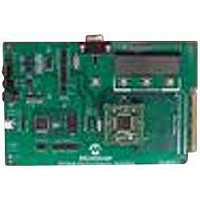MCP3909EV-MCU16 Microchip Technology, MCP3909EV-MCU16 Datasheet - Page 31

MCP3909EV-MCU16
Manufacturer Part Number
MCP3909EV-MCU16
Description
EVALUATION BOARD FOR MCP3909
Manufacturer
Microchip Technology
Datasheets
1.MCP3909T-ISS.pdf
(44 pages)
2.MCP3909T-ISS.pdf
(104 pages)
3.MCP3909EV-MCU16.pdf
(38 pages)
Specifications of MCP3909EV-MCU16
Number Of Adc's
2
Number Of Bits
16
Sampling Rate (per Second)
15k
Data Interface
Serial
Inputs Per Adc
1 Differential
Input Range
±1 V
Voltage Supply Source
Analog and Digital
Operating Temperature
-40°C ~ 85°C
Utilized Ic / Part
MCP3909
Silicon Manufacturer
Microchip
Application Sub Type
ADC
Kit Application Type
Data Converter
Silicon Core Number
MCP3909
Kit Contents
Board
Lead Free Status / RoHS Status
Lead free / RoHS Compliant
© 2009 Microchip Technology Inc.
3.3.3
After the data set of either a voltage or current signal (of each phase), has been DFT
transformed, the voltage or current magnitudes of the different harmonics can then be
calculated. The total effective voltage or current (RMS) can be obtained by further
calculaton, by simply combining the results of the individual harmonics (including the
fundamental or the 1
Computing the magnitude of the voltage or current is accomplished by function
ComputeMagnitude(). The result, called amplitude, is a long integer, and is the
squared magnitude of voltage or current. To speed up the computation, fixed-point
operation is used. The ComputeMagnitude() routine is written in assembly language.
After the magnitude is computed, there is an adjustment process which is based on a
floating-point operation. The limited number of computations will not affect the
operation speed, and will instead greatly improve precision.
Parameter ratio1 in the firmware is a coefficient related to the number of sampling
points (see Equation 2-2). Division is accomplished by a simple shift operation in
firmware. If the sampling cycle is not a power of 2, it cannot be accomplished by
shifting. However, division by shifting can be accomplished by multiplying a compen-
sating coefficient Coeff.data.linear.V_channel[]. This is the calibration coefficient for
ratio errors.
Since the current signal has a wide dynamic range, for small signals, the ADC output
data range is small and is limited by DSP's bit resolution (16-bit MCU). If division by
shift is used in the same way that is used for large signals in computation, precision
may be affected. Therefore, for computing magnitudes of small signals, ComputeS-
mallMagnitude() function is used instead. This function is similar to ComputeMagni-
tude(), the only difference being that the shift length is shortened in division operation,
and will be compensated during data adjustment. The computation precision will not be
affected as the data adjustment process uses float-point operation.
3.3.4
Computing harmonics is accomplished in assembly language, by the function Com-
puteHarmonic(). The computation is based on Equation C-62, in Appendix
C. “Power Calculation Theory”. The result is the ratio of the magnitude of K-th
harmonic to fundamental magnitude, and is given in a percentage.
3.3.5
Computing power is accomplished in assembly language by the function Compute-
Power() based on Equation C-39 and Equation C-40 in Appendix C. “Power Calcu-
lation Theory”.
After the ComputePower() function is complete, an adjusting process for computed
power is required. First, the computed result is adjusted according to the gain of current
amplifier. Then the calibrating coefficient ratio2 is determined according to present
number of sampling points.
Additional compensation to the power calculation is required, for phase compensation.
This compensation is based on the present load current. The difference between signal
frequency and the central frequency is also taken into consideration. Consequently
computed power is compensated.
Note:
Calculating RMS Voltage/Current
Calculating Harmonics
Calculating Power
Since the output of ComputeHarmonic() is the squared harmonic
magnitude, extraction of square root is needed in computation. The
calculated harmonic content is stored as a fixed-point number, and the
actual value stored is the harmonic content multiplied by 10.
ST
harmonic).
Firmware
DS51723A-page 31











